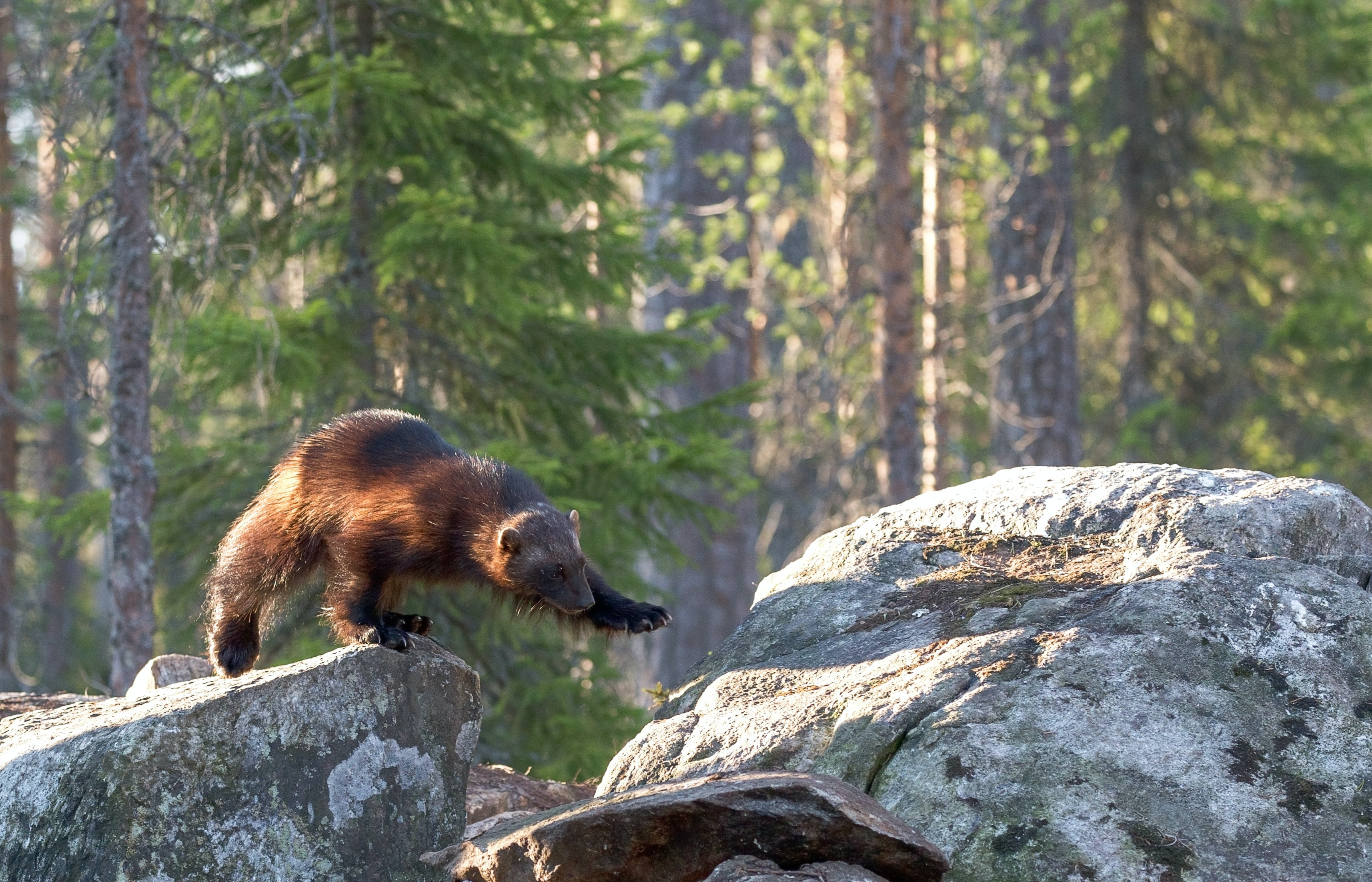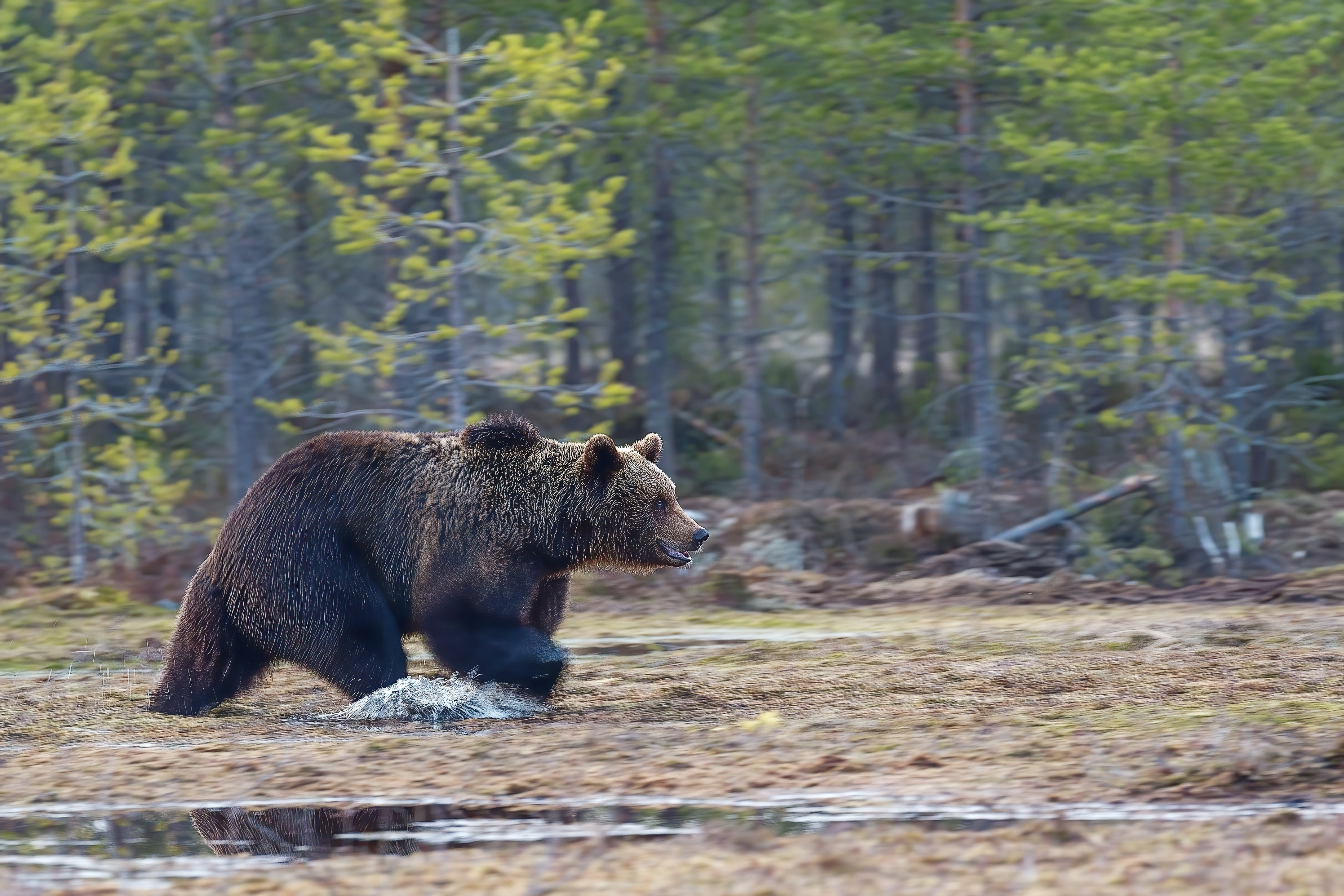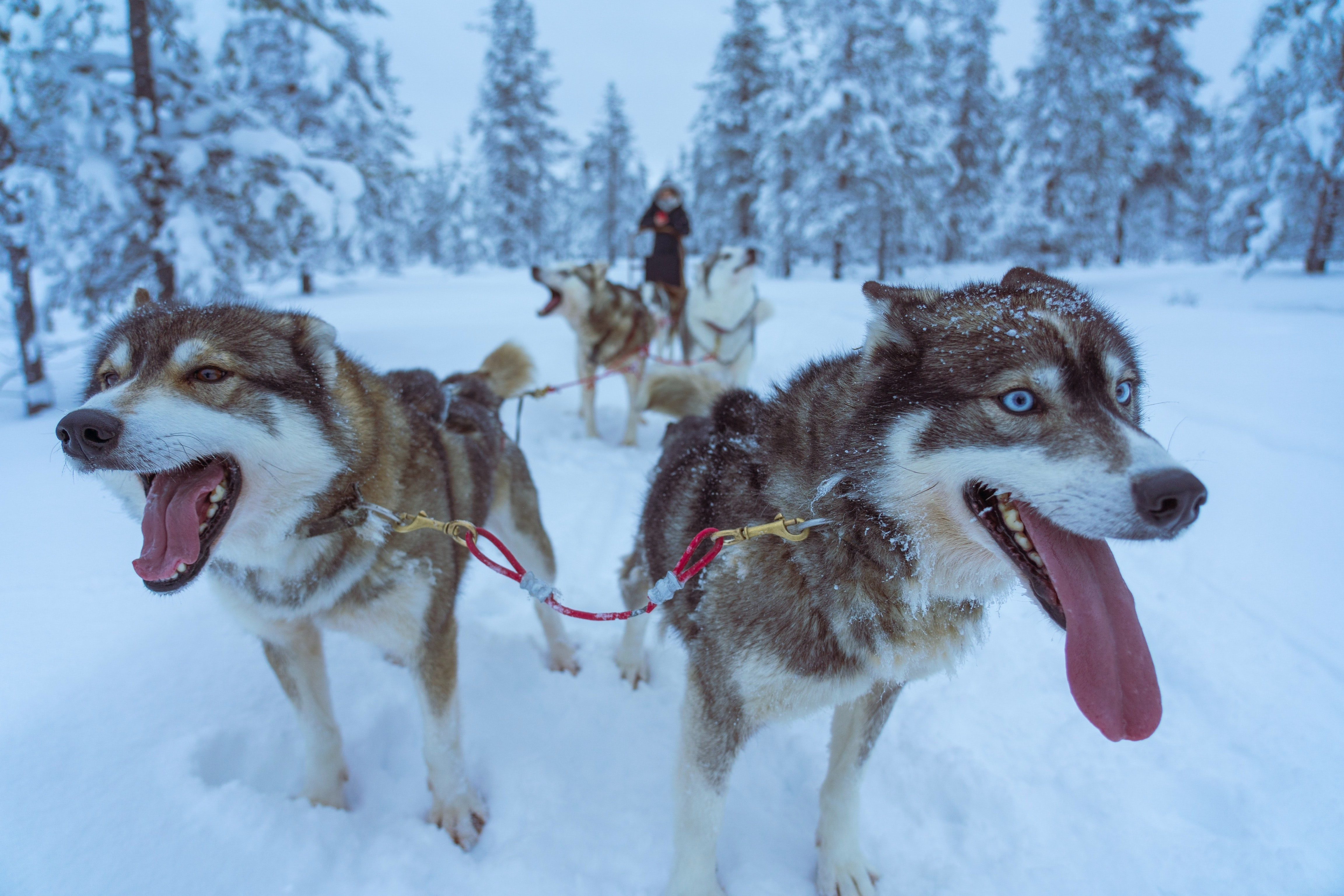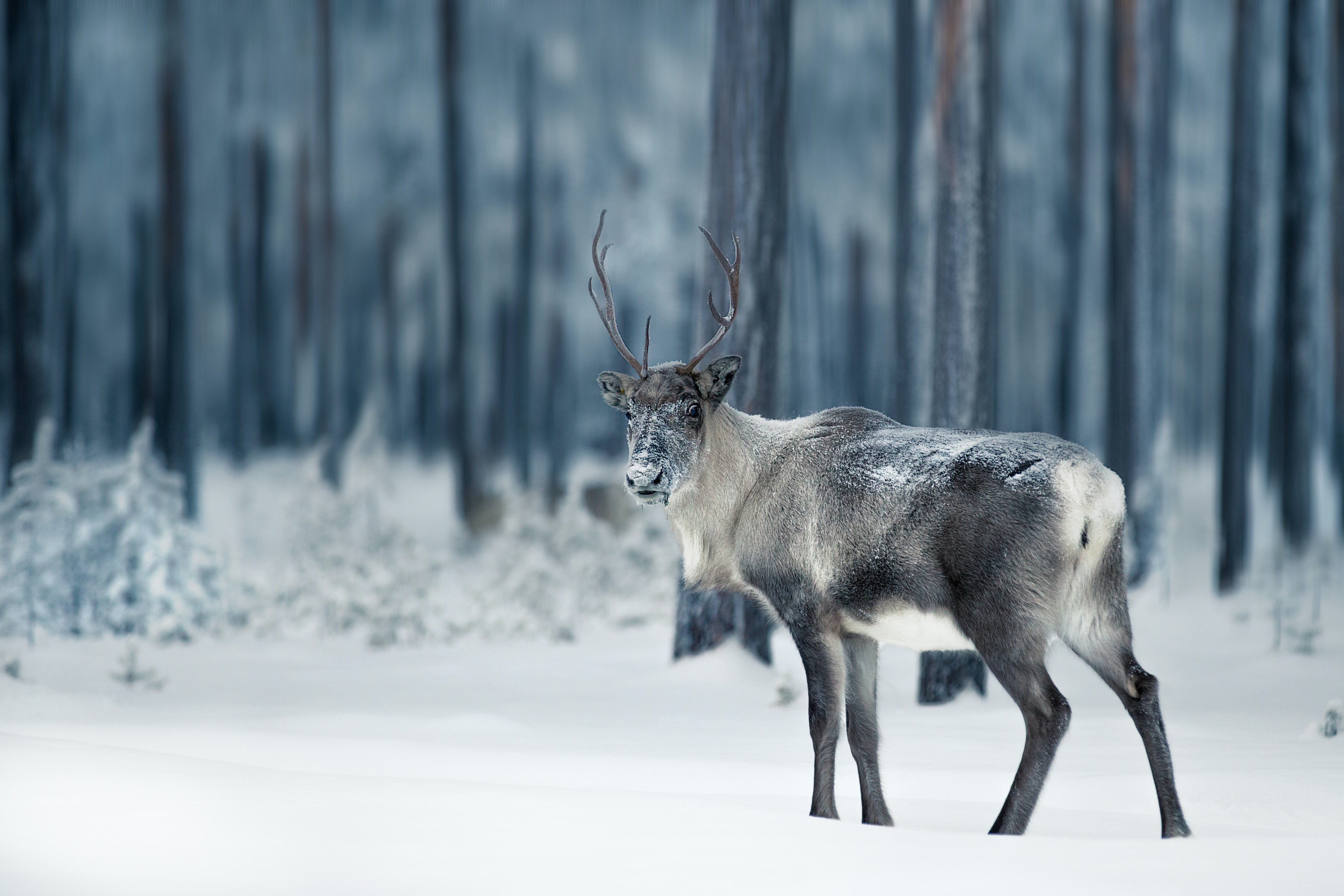With Lapland's frosty conditions, it isn't easy to fathom just what animal species could survive here. And yet, nature somehow manages to carry on. Lapland is home to several cold-loving animals, including Arctic foxes, rare lynxes, and of course, whole herds of reindeer.
Here are some of the wild animals you might expect to see during a visit to Lapland:
1. Wolverines

These obnoxious individuals eat ANYTHING. Such avaricious gluttons! The wolverine has the appearance of a cross between a bear and a wolf. Wolverines are a shy species, so that you won't see one in the wild. Wolverines are private creatures, and they are usually only seen close to other members of their species when mating or when mothers are caring for their young. Females typically have two to three babies in late winter and give birth once a year. For two years, the young kits stay with their mother.
This amusing little creature resembles a cross between a skunk and a little bear. It has small eyes and short circular ears that contrast with its little spherical face. Muscles wrap their thick head, neck, and shoulders, insulated by a brown coat with two adjacent yellow stripes.
2. Bears

In Lapland, the brown bear is the most numerous of the large omnivores (also found in these parts are wolves, lynx, and the wally mentioned above, wolverine). They're also the haziest.
Bears can be frightening, but they're not hazardous to humans, and they're more terrified of you than you are of them, just like the wolverine.
3. Eagles
Eagles are distinguished from other birds of prey by their larger size, more muscular build, and heavier head and beak.
The Accipitridae family of birds of prey contains over 60 different species of eagles. Only 14 species are found in North, Central, and South America, Australia, Eurasia, and Africa are home to the vast majority of the species.
Sea eagles, booted eagles, snake eagles, and giant forest eagles are the four main types of eagles. Booted eagles have a diverse diet that includes birds, small mammals, reptiles, rodents, amphibians, and insects, whereas others have a more limited diet. Sea eagles, also known as fish eagles, primarily feed on fish, whereas snake eagles specialize in capturing reptiles. Giant forest eagles eat a variety of forest animals. One of the most significant eagles, the Harpy eagle, feeds on larger animals such as monkeys, sloths, and coatis.
4. Huskies

Huskies are athletic and energetic dogs with a thick double coat of grey, black, copper red, or white. Huskies have pale blue eyes, but they can also have brown eyes, green eyes, blue eyes, or even different colors!
5. Reindeer

Reindeer do not fly, but they do have red noses on occasion. These animals are members of the Cervidae family, including deer, elk, moose, and wapiti. Reindeer, like the rest of their family, have long legs, hooves, and antlers.
Reindeer are herbivores, meaning they eat plants solely. Herbs, ferns, mosses, grasses, shoots, fungi, and leaves can all be found in their diet.
Reindeer are built to withstand cold temperatures. Their noses warm the air before it reaches their lungs, and they have fur covering their entire bodies, including their hooves. These creatures cannot fly, but they can run.



Leave me a comment
Thank you for reading my post, if you want to leave a comment, you can do so below.